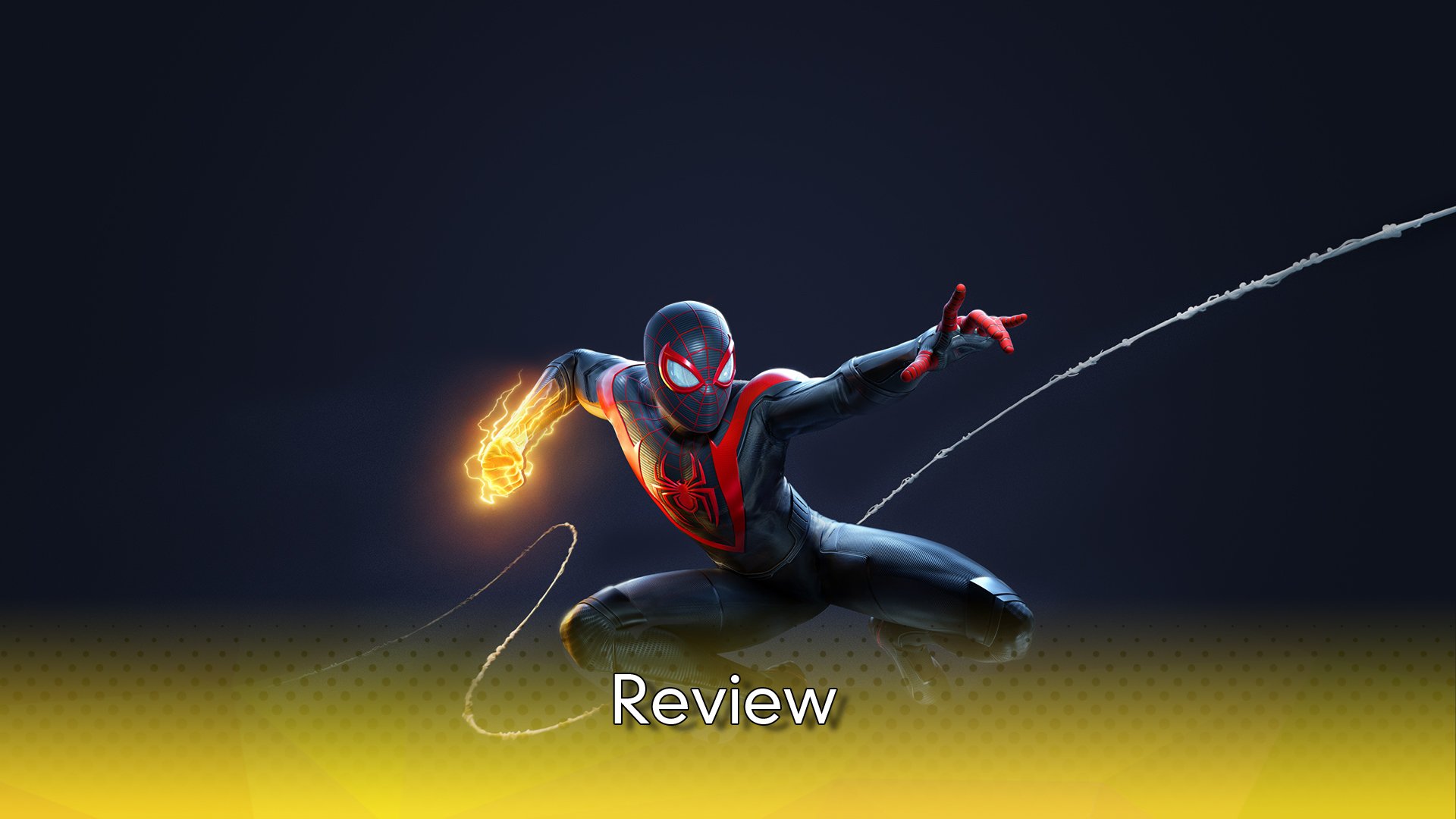Spider-Man: Miles Morales - Review

2018 was an enormous year for Spider-Man, playing a major role in Avengers: Infinity War, starring in the spectacular Spider-Man: Into the Spider-Verse, and making a triumphant return to videogames in Marvel’s Spider-Man for PS4. Two years later, and the wall-crawler is back to usher in the next generation of gaming with Marvel’s Spider-Man: Miles Morales on the PlayStation 5.
Kinda-not really spoiler alert: this sequel centres around Miles Morales, who was bitten by his own organically-altered spider in the 2018 game, and is now Peter Parker’s protégé. The game opens with Peter and Miles working together to escort the last of the escaped convicts from The Raft off-shore prison which was a major location in the previous game. Long story short: things go sideways (literally), and the Rhino is let loose on Manhattan, with the two Spider-Mans having to chase him down. It makes for a bombastic opening and fantastic showcase of the PS5’s new graphical abilities.
The game then wastes no time in removing the training wheels and cutting Peter Parker out of the picture: this is Miles Morales’ story, and an opportunity to focus a lens on a more personal slice of the Spider-Man mythology. We’re introduced to an ethnically diverse set of characters, and experience an origin story of a teenage superhero who represents his culturally varied community. In fact, while the game is set in the exact same city as the 2018 game, its focus is definitely on uptown Manhattan’s Harlem, and the people living there.
Anyone who played Marvel’s Spider-Man the first time will feel comfortable with how Miles plays; much of the gameplay holds over to this version, with some variations on a theme. Swinging, combat, random crimes, finishers, side-quests, challenges, upgrades, and mission structures don’t deviate much--if at all--here, and that’s fine. But let’s take a look at what’s new.
One of the first things people might notice when playing as Miles is how undisciplined his moves are compared to Peter Parker. From the get-go, Miles’ Spider-Man may feel the same when swinging around New York, but he certainly looks different while doing it. His animations depict a less experienced Spider-Man, who flings his body at awkward angles is still figuring out how to achieve stealthy enemy knockouts. Unlike his mentor, who is a seasoned superhero at the starting point of his game. Throughout Miles’ adventure, levelling up and gaining new abilities feels like you’re part of the superhero’s journey, going from greenhorn to a fully-fledged saviour.
There’s also the Friendly Neighborhood Spider-Man app, which is just a cutely-named menu for finding new side-missions to complete. But narratively it ties in nicely with the kind of hero Miles is trying to become, and is managed by his friend Ganke who acts as the hero’s confidant and intelligence gatherer.
But the main game play difference is Miles’ unique bioelectricity--venom--powers widen his repertoire of abilities over OG Spidey’s. Venom abilities, charged by dealing combat damage, allow Spider-Man to deliver huge electrical attacks that stun enemies and can even be upgraded to daisy-chain along nearby foes. Eventually, Miles also gains invisibility powers, which allow for more stealthy takedowns and wall-crawling. These two sets of powers really change up the combat dynamic, and the venom blasts in particular make for some cool area-of-effect moves to take enemies out. I do miss the web blossom from the 2018 game, though, which worked reliably as an “oh sh**!” button.
All these iterations make for a great differentiator between the original 2018 game and Miles Morales’ adventure, but what really helps justify the purchase of a beefy PlayStation 5 (if you were lucky to have gotten one at launch) is the load times thanks to the next-gen custom SSD. The time between booting the game from the system menu to swinging around Times Square is literally seconds, which is incredible considering the vastness of the world, compared to surviving the nightmarish load times of the PS4/Xbox One era. A remaster of 2018’s Marvel’s Spider-Man was released alongside Miles Morales, which also totes all the technical improvements showcased here (including ray-traced lighting and reflections), however a code for that game was not provided for review. It can be safely presumed though that the two games perform similarly, and fast travelling never felt so literal as it does now.
Speaking of PS5’s bells and whistles, there’s the option to switch between Performance and Fidelity modes: the former prioritises 60FPS at a 1440p resolution upscaled to 4K, and the latter pushes ray-tracing, more complex VFX, and 4K native resolution at 30FPS. It’s interesting that a launch game sees quite a jump in compromise for either visual mode, and hopefully down the line developers will be able to let players have their cake and eat it too. I personally only own a 2013 Sony Bravia 3D TV, that maxes out at 1080p, but playing Miles Morales in fidelity mode still demonstrates a night and day difference between last- and next-gen, particularly with ray-tracing and the amount of particle effects dazzling all over the screen. I can only imagine how amazing this game would look on a 4K TV.
Aside from being a technical showcase for the PS5, Miles Morales stands strong on its own as a standalone title. Admittedly, the game does feel short: the main story could easily be finished in just a few hours if you decide to head straight down that path. But then you’d be missing out on all of extra spider-goodies dotted around New York. Bits like JJ’s radio show and the new Danikast podcast, both of which are opposites of each other as to their opinions about a new Spider-Man.
What really makes the story strong are its cast of characters: Miles and his mother’s learning to cope after the death of his dad; Ganke’s support and role as Spider-Man’s intel gatherer; Miles’ uncle Aaron and their relationship surrounding his own secret identity; and finally Miles’ lifelong friend Phin, who is more scientifically ambitious and driven by her own experiences (which I’ll refrain from getting too far into). Of course, a Spider-Man story isn’t without its evil, science-based villain, this time being the Roxxon company instead of Oscorp, and its nefarious plot to distribute a highly unsafe power source throughout Manhattan in order to… Whatever, they’re just bad, okay?
Ultimately, Marvel’s Spider-Man: Miles Morales is a great technical showcase for what the PS5 is capable of going forward. It can be argued that the moment-to-moment gameplay is just a gussied up version of what existed two years ago, but thankfully it builds upon a game that was great in every way, all the while shining more light on a new Spider-Man that further strengthens the growing minority of culturally diverse superheroes. It also helps that it’s a touching coming-of-age story with heart and charm, easily balancing a smaller scale story set amongst large-scale bombast. The game is still enjoyable enough on PS4 if the gameplay and story is what matters most to you, or if you missed out on the first wave of PS5 systems--but definitely pop this one into Sony’s next-gen console if you want to see Miles Morales shine.
The Score
9.0
Review code provided by PlayStation
The Pros
+Looks amazing
+Touching story and relatable characters
+Does everything the 2018 game does, and sometimes even better
The Cons
-A bit short
-Some bugs; likely to get patched
-If you didn’t like the previous game’s side-missions, you’ll be disappointed here, too.










